There are over 30 various species of seals and sea lions living in the world’s oceans, all of which swim a great deal faster than the average human.
Although they appear clumsy and awkward on land, in the water, the seal uses its torpedo-shaped body and fin-like feet to perform amazing feats of agility and predation.
It might be challenging to see the similarities between harp seal pups and walruses, but I promise you, there are plenty.
Without further do, let’s dive into the world of seals and find out how they came to occupy almost every coastline on earth, why they were nearly hunted to extinction, and what the future might hold for them.
What Kind of Creature Is the Seal?
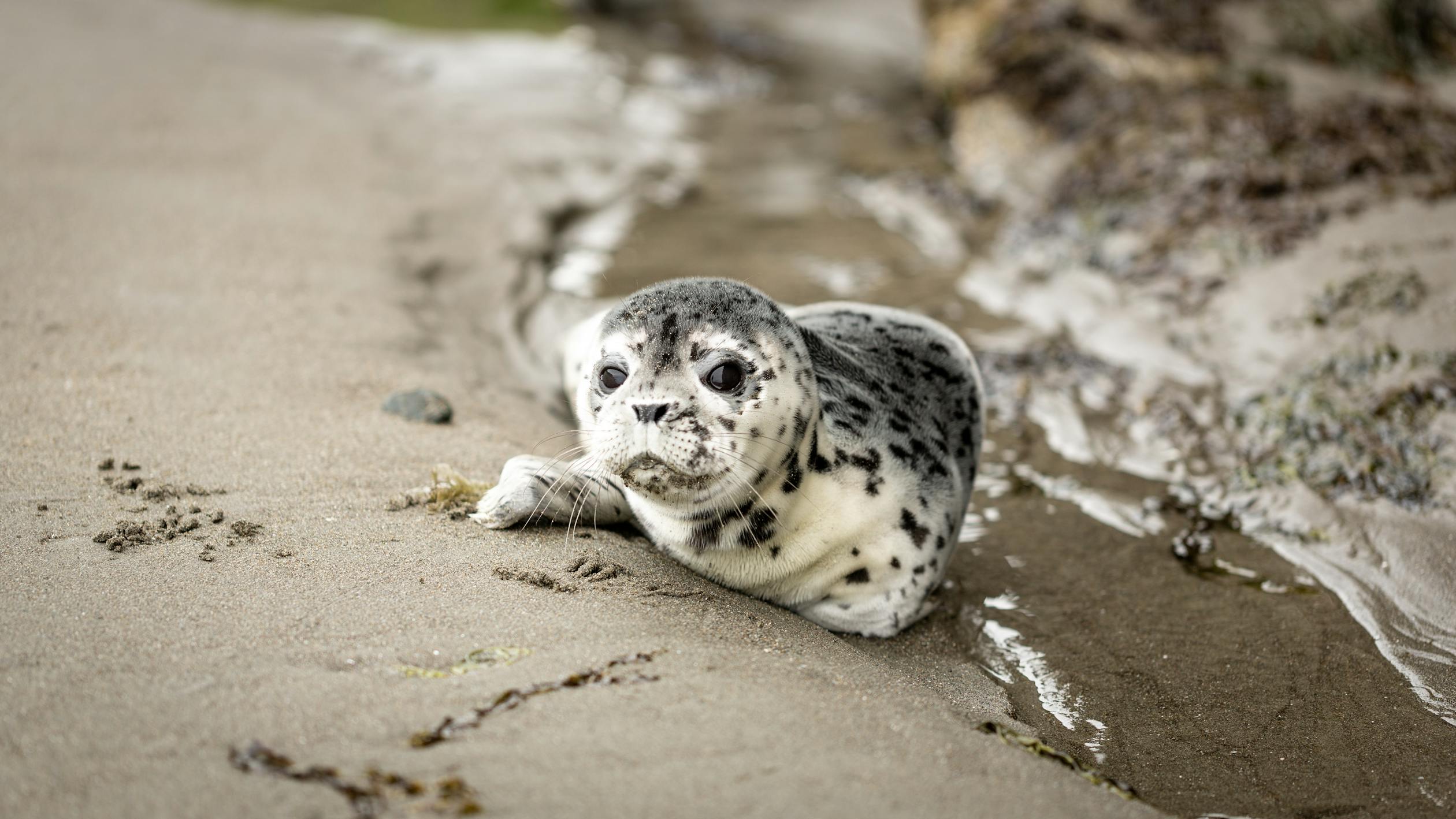
Seals are aquatic mammals, but they are more closely related to bears and skunks than any other marine mammals. That could be because they were once exclusively terrestrial, living entirely on dry land, but more about that later.
Unlike other marine mammals, seals spend long periods on land using nearby oceans and lakes for foraging and hunting. Most seals spend at least 50% of their time in the water, with some species, like the elephant seal, only coming out to breed.
What’s the Scientific Name for Seals?
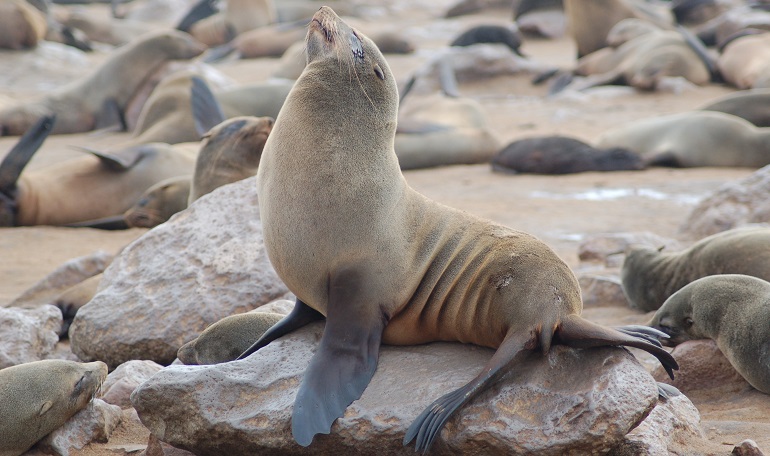
Seals are scientifically known as pinnipeds, which means fin-footed, and all seals have fin-shaped feet, or feet-shaped fins, depending on your perspective.
This is one of just a couple of characteristics that all seals share, with the other being a fusiform or torped0-shaped body that tapers at both ends.
What Does a Seal Look Like?

Whenever I think of seals, my mind automatically conjures up images of cute, furry Harp seal pups with their thick white coats and big, black eyes. Not all seals look like that; in fact, even adult Harp seals bear little resemblance to their pups.
It’s difficult to see the similarities between an 8,800-pound walrus and a 20-pound seal pup, but there are some there, I promise.
Both have fin-shaped feet and flattened bodies that taper at either end. Their bodies are also covered in a thick layer of subcutaneous fat, known as blubber, that helps keep them warm in arctic waters.
Seals come in various colors, with some, like leopard seals, sporting spots or blotches on their backs. As much as they vary in color, they also fluctuate in size.
The smallest is the little-known Baikal seal of Siberia which measures approximately four feet long, while the largest is the walrus, which can reach over 20 feet.
How Many Seals Are There in the World?
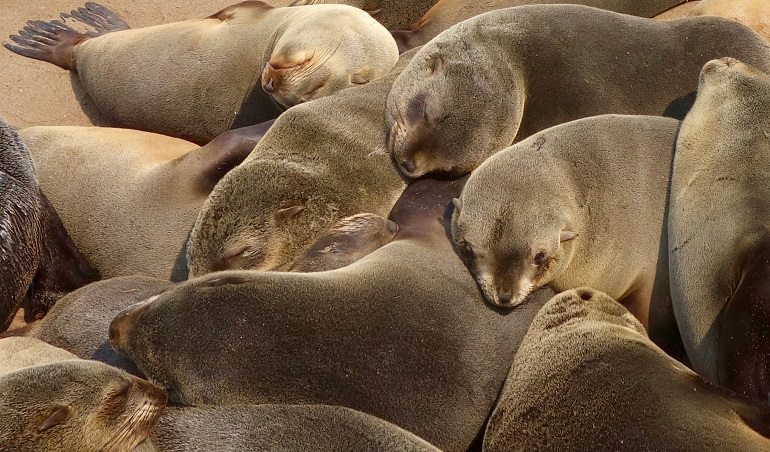
There are so many different species of seals living in a diverse range of ocean and freshwater habitats that it’s difficult for anyone to accurately estimate the current world population. However, one thing’s for sure – while some populations are thriving, others are decreasing rapidly due to a variety of threats.
According to the International Union for Conservation of Nature (IUCN), there are approximately 315,00 adult Harp seals in the world, but less than 100 of the freshwater subspecies known as the Ungava seal.
What Are the Three Different Types of Seals?
The 32 species of seals are divided into three species, with the first being the true seals.
True seals appeared to have no ears, so also called earless seals. They do have ears; they just don’t have external ear flaps. Instead, the entire organ is hidden under their skin. That’s only one of many secrets we will reveal in this article!
Species of eared seals include sea lions and all fur seals. They have external ear flaps that are clearly visible, though not as obvious as an elephant’s!
Only one species belongs to the third type of seal: walruses. They differ from the other groups because they can turn their hind flippers forward to help them move more effectively on land.
The Etymology of the Seal

I struggled to track the exact origins of the word ‘seal,’ although some sources suggest that it could have come from an old European word meaning “to pull” or plow.
Although that makes some sense, as seals do plow their way through the water, it’s by no means as descriptive as the Dutch word. They call it the “zeehond,” which means sea hound, and underlines their evolutionary connection to the canid family.
The Taxonomic Hierarchy of Seals
Seals are mammals and, as such, belong to the Mammalian class along with over 6,000 other species. Within the class Mammalia, there are 26 different orders, of which seals fall into the order Carnivora, which also includes wolves, bears, hyenas, and dogs.
Seals have their own sub-order, pinnipeds, but are divided into different families based on their ear structure. The True seals we mentioned earlier belong to the family Phocidae, while those with external ears are part of the Otariidae family.
Walruses are unique; they have a family all of their own because they’re the only pinnipeds whose upper canines have developed into tusks. There used to be other species in the Odobenidae family, but they’ve gone extinct, leaving the two types of walruses, North Atlantic and Pacific, on their own.
What’s the Evolution of the Seal?
In the dim and distant past, seals lived on the land just like most other members of the Carnivora order. When scientists discovered an Arctic fossil dating back some 20 million years, the evolution of the seal became much clearer.
The Puijila darwini was an otter-like creature that lived on land but had webbed feet that enabled it to swim well enough that it could hunt in shallow water.
According to Natalia Rybczynski, who discovered the fossil, it probably swam in a rather ungainly manner using all four limbs to propel itself through the water.
Over time, this swimming stroke could have easily evolved into both the seal’s swimming technique, which relies on waving its hind flippers from side to side, and the sea lion’s approach, which relies on the front flippers for propulsion.
The Anatomy and Physiology of the Seal
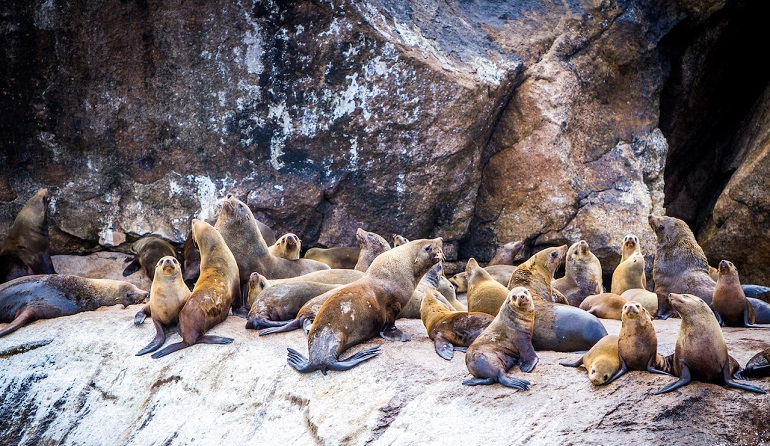
Regardless of whether they’re Harbor seals or Ringed seals, all seals are shaped a little like bowling pins, with small heads and large, rounded bodies that taper towards their hind flippers.
As they evolved into marine mammals, they adapted to their new environment, developing ingenious ways to regulate their body temperatures while developing acute senses and diving techniques that enabled them to hunt successfully.
Senses
All the seal’s senses are adapted for life underwater. Their comparatively large eyes can see just as well in water as they can in the air. Ice seals have had to further adapt their eyes to cope with the high levels of ultraviolet radiation common in snowbound environments.
Different types of seals have adjusted their hearing according to their environmental needs.
A study of low-frequency amphibious hearing in pinnipeds found that Harbor seals hear equally well underwater as they do on land. In contrast, Elephant seals, which spend up to 80% of their time underwater, have enhanced their underwater hearing capabilities “at the expense of aerial hearing sensitivity.”
Locomotion
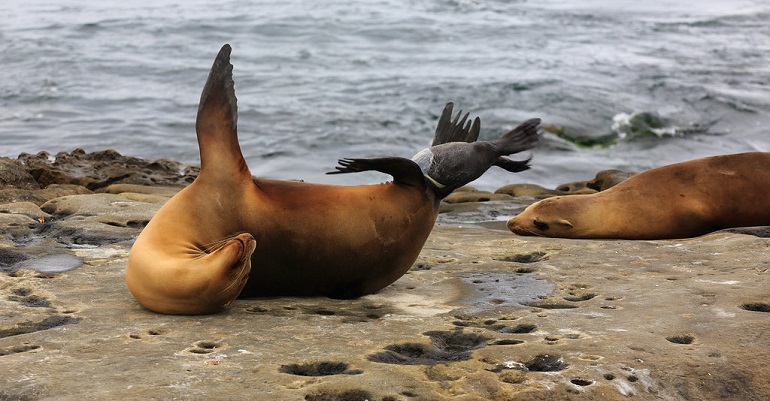
Even though seals were once terrestrial animals, they’ve had to sacrifice the ability to move easily on land so they can swim more efficiently.
Although they’re not as fast as dolphins, their streamlined bodies mean they can reach speeds up to 30km/h. Some species, particularly sea lions, are so flexible they can bend their heads back to meet their hind limbs.
While most species swim using their hind flippers, other sea lions and seals use their front limbs for propulsion and their hind limbs for balance and stability.
Thermoregulation
Seals’ bodies are covered in a thick layer of blubber which insulates them against cold water and icy environments and keeps the animals warm. If they get too hot on land, they either flip onto their backs to cover themselves in cool sand or, in the case of Northern fur seals, pant like dogs.
Like many other marine mammals, seals also use a process called countercurrent exchange to keep their vital organs and muscles warm. The blood in their extremities is allowed to cool and then recirculated back to their core to warm up again.
Diving Adaptations
Seals can’t breathe underwater, so they have to rely on the oxygen they already have in their bodies. To do this, they have reinforced lungs that they can completely deflate. This adaptation is so effective that Elephant seals can stay underwater for up to two hours, diving to depths of over 6,500 feet!
Seals can also store oxygen in their blood and muscles and reduce their oxygen requirements by slowing down their heart rates.
Sleeping Habits
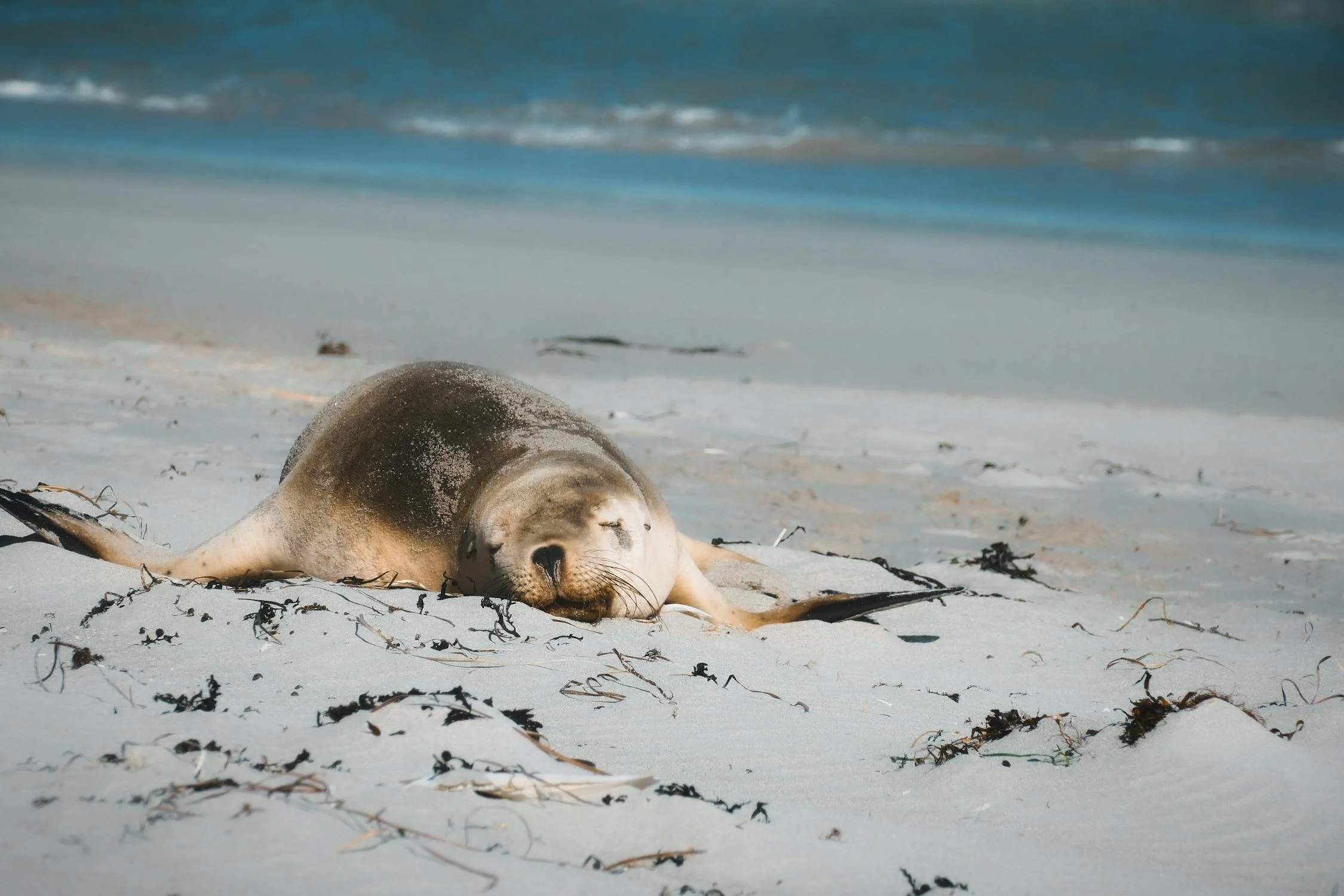
Seals spend so much time in the open ocean that they’ve developed the ability to drift off to sleep while floating on their backs. Many species can also sleep vertically in the water, with only their heads sticking out.
Such behavior puts them at risk of predation, so they practice unihemispheric slow-wave sleep (USWS), in which only one-half the brain rests at a time.
Despite this adaptation, sleeping seals are still an easy target, especially for slow-moving ambush predators like the Greenland shark. It creeps up on unsuspecting Arctic seals, which choose to sleep in the water to avoid predators that are land-based, like polar bears.
Where Are Seals Found?
Seals live in coastal waters all over the world, with different species inhabiting different climates and habitats. Northern fur seals and Monk seals are the most common species in the North Pacific, while the Southern Ocean is dominated by the highly specialized Crabeater seal.
Up in the Arctic Ocean, you can expect to encounter any one of the six species of Arctic seals, including Harp seals, Grey seals, and Bearded seals, while the Antarctic is home to the Weddell seal and Southern Elephant seals.
Cape fur seals dominate the coastline of Southern Africa, while California sea lions are frequently spotted along the west coast of North America.
The Behavior and Life History of Seals
Seals have adapted to almost every marine environment and, to do so, have widely varied life histories and behaviors.
Is the Seal a Carnivore?
Despite their numerous differences, all seal species are carnivorous. Most species prey on fish, but a few have more selective diets, like the Crabeater seal that eats only krill.
What Makes Up The Seal’s Diet?
Some seals are more opportunistic than others and will eat almost anything that comes their way, from fish to crustaceans. Harbor seals aren’t fussy eaters, but they’re still more selective than Leopard seal, which is the only living member known to take down other warm-blooded animals, including other seals.
Leopard ones are arguably the most aggressive of all the seal species, hunting and killing the pups of Antarctic fur seals and Crabeaters. They’ll also pursue penguins and even gobble down some krill if there’s nothing else available.
Walruses will scavenge if necessary but generally prefer scouring the sea floor in search of invertebrates such as sea cucumbers, worms, and sea squirts.
The Reproductive Behavior of the Seal
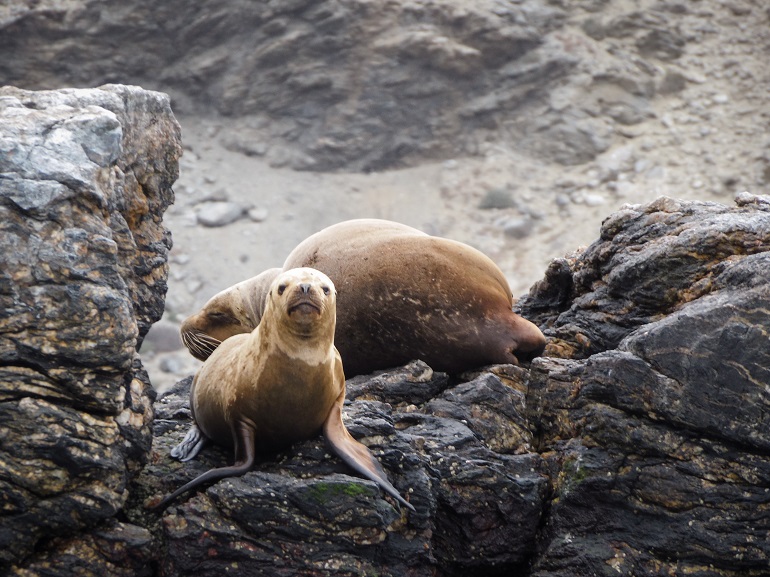
At the start of mating season, Steller sea lions congregate in their hundreds. A dominant male will have a harem of up to 30 females, which they guard aggressively.
Many species of seals are polygamous, with a single male impregnating multiple females during the season. Others, like spotted seals, are seasonally monogamous and will stay together as a couple until after the pups are weaned.
Most seals have a gestation period of between eight and 12 months, while walruses are pregnant for between 15 and 16 months!
How the Seal’s Behavior Varies During Parenting
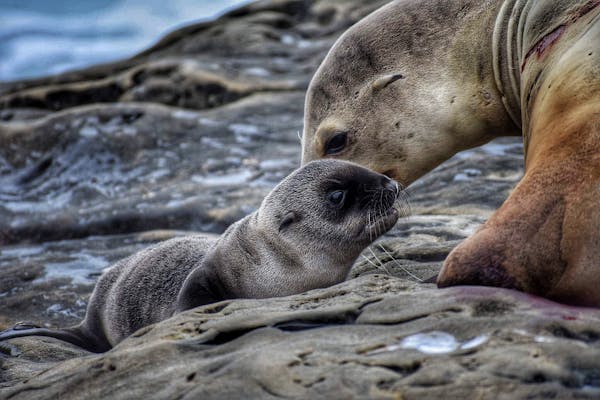
The parenting behaviors of seals are almost as diverse as it is among humans. A study of Grey seals off the coast of Scotland found that some pay close attention to their pups, much like helicopter parents in the human world, while others tend to leave them to their own devices.
Walruses are extremely attentive mothers, often staying with their pups until they’re 18 months to two years old. Harbor seals, on the other hand, leave their pups at one-month-old, going on regular foraging missions to maintain their own body weight and feed their little ones.
Vocalizations and Communication in the Life of a Seal
Seals use vocalizations and body language to communicate with one another, starting almost as soon as they’re born.
Harbor seal mothers are instinctively attuned to the sheep-like calls of their pups and rely on them to locate their pups out of the hundreds inhabiting a single rookery.
Despite that, Harbor seals are probably the least vocal of all the pinnipeds, vocalizing more underwater than they do on land.
In addition to growls, barks, hisses, and snorts, seals also use movements to communicate, sometimes slapping the water with their flippers to show aggression.
The scent also plays a significant role, especially for Antarctic fur seals, which use it to recognize their offspring.
The Seal’s Level of Intelligence
Dogs are intelligent, but not when you compare them to seals. I’ve never heard of a dog that could learn to talk, but there was a Harbor seal called Hoover who not only managed to mimic human speech but even perfected the Bostonian accent!
In captivity, seals have proved to be quick learners that respond readily to both vocal and visual commands. They don’t have very good long-term memories but can retain the information they learned 18 seconds ago and repeat the same behavior on cue.
The sea lion appears to be even smarter, with studies showing that sea lions can remember the tricks they were taught in captivity for up to four months.
Seals and Their Relationship With Humans
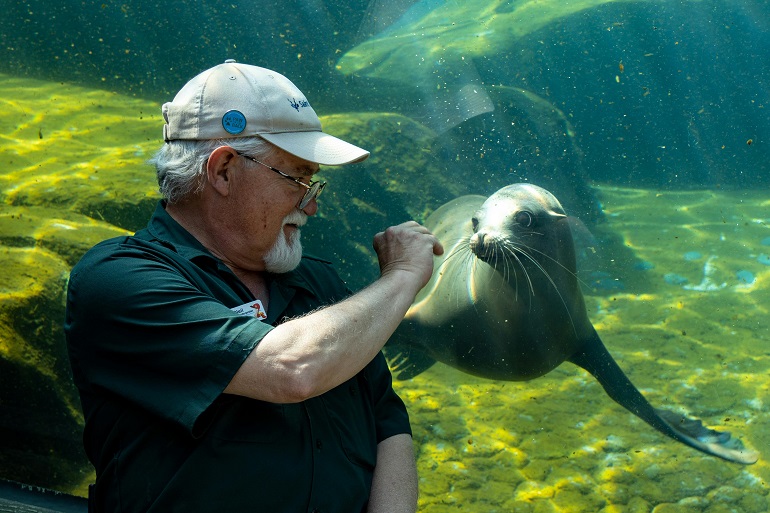
The first relationship to develop between humans and seals was one of predator and prey. Humans started hunting seals for their pelts and meat over 10,000 years ago and continue to do so today, but that’s not the only thing that connects us.
Are Seals Culturally Important?
For generations, Harp seals have provided coastal communities throughout Northern Canada with everything they need, from warm clothes to fuel and food. They have become an integral part of the culture, representing wealth and symbolizing innocence.
Seals are so integral to life in Northern Canada that these indigenous populations are still allowed to hunt and harvest seals, although the practice is now heavily regulated.
When Did We Start Keeping Seals in Captivity?
Walruses were the first pinnipeds to be kept in captivity, with the very first being transported to Sweden’s Skansen Zoo in 1608. Other pinnipeds arrived shortly afterward, with a Mediterranean monk seal being brought into captivity in 1760.
Since then, almost every kind of seal has been represented in aquariums, marine parks, and zoos across the world, with many being used to perform tricks at popular sea life shows and other events.
Although they are highly trainable and seem to adapt to life in captivity relatively well, they can’t express all their natural behaviors in an enclosed environment. A seal can’t hunt for its own food in an aquarium, nor can it form the complex social bonds it would in the wild.
Without enough enrichment, seals may also become bored or depressed and may develop unnatural behaviors or stereotypies as a consequence.
Is Seal Hunting Still Legal?
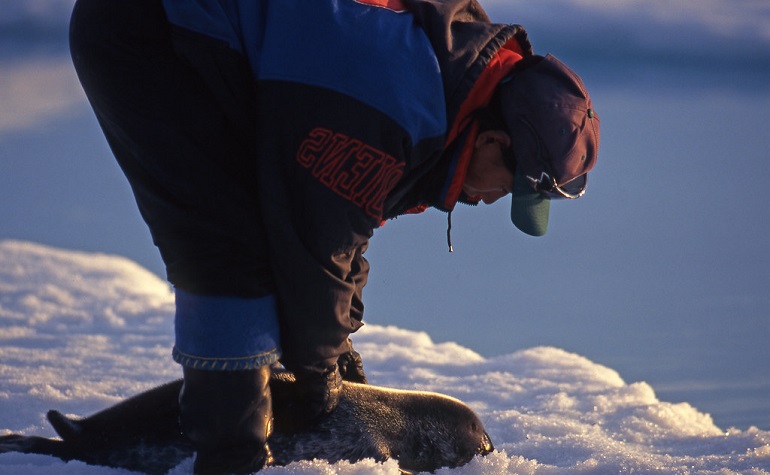
Some countries still allow seal hunting to take place, including the US, Canada, Namibia, Greenland, and Russia, but many restrict the practice to certain species and times of the year.
Until a few years ago, Canada would export millions of dollars worth of seal pelts and furs, but it seems demand is waning.
Animal welfare organizations are keen to see more protection for these animals, even though some communities, like the Nunavut Inuit, depend on them for their livelihoods.
Are Seals Endangered and What Threats Do They Face?
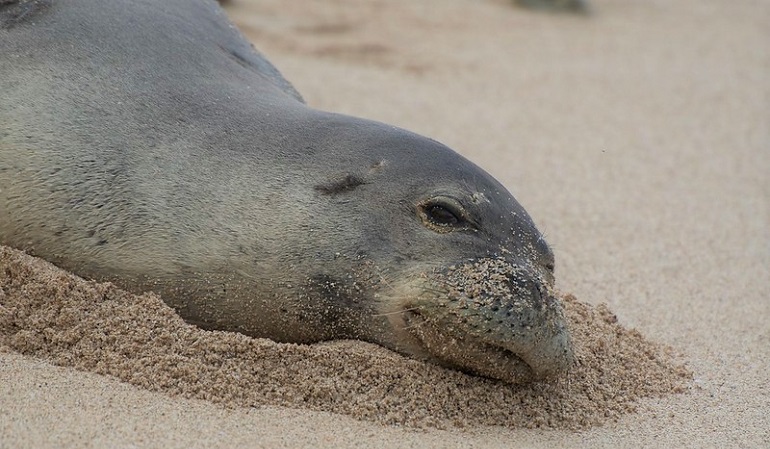
Some seal populations appear to be flourishing, with some, like Harp seals, even increasing in numbers. Scientists estimate that there are around 7.4 million Harp seals in the world today, compared to just “1.1 million animals in 1971.”
Other species are critically endangered, including both the Mediterranean and Hawaiian monk seals and Saimaa ringed seals.
These species have small geographical ranges and limited gene pools. They also face threats from humans, as do nearly all seal species.
Not only have humans hunted seals for thousands of years, but human developments have caused widespread habitat destruction.
Tourism also negatively impacts many seal populations, with visitors unintentionally disturbing mothers and their cubs by getting too close.
Seals are also vulnerable to vessel strikes and getting entangled in commercial fishing gear.
FAQs
How Long Do Seals Live?
The oldest seal in the world was a female Baikal seal, who scientists estimated was 56 years old when she passed away. Few pinnipeds survive that long, although the average life expectancy for the harbor seal is pretty impressive at 25 to 25 years.
Not all pinnipeds enjoy such long lives, and the Northern Elephant seal rarely survives beyond around 15 years of age.
Do Seals Live in the Ocean?
Seals are semi-aquatic, which means they divide their time between land and sea. Nearly all pinnipeds spend around 50% of their lives in the ocean, except the Baikal seal, which is the only exclusively freshwater pinniped in the world.
What are Seals Related to?
Believe it or not, the bear is amongst the seal’s closest living relatives, as are both the skunk and the weasel. All have similar evolutionary stories to tell, even though they’ve adapted to vastly different habitats.
Do Seals have Legs?
A seal’s flippers evolved out of its legs and feet, so it effectively has four legs or limbs.
Are Seals Mammals?
Seals have nothing in common with reptiles but do have milk-producing mammary glands, which means they are mammals, just like us!
Conclusion
Even though all pinnipeds have things in common, there are vast differences between each specie. Leopard seals are aggressive hunters that will attack and kill seal pups, while walruses spend most of their time sucking snails from their shells!
The great diversity of seals in our oceans is something to celebrate, at least for as long as they all survive. These adaptable, intelligent creatures play an important role in the ocean’s ecosystems and are worthy of our respect and protection.


